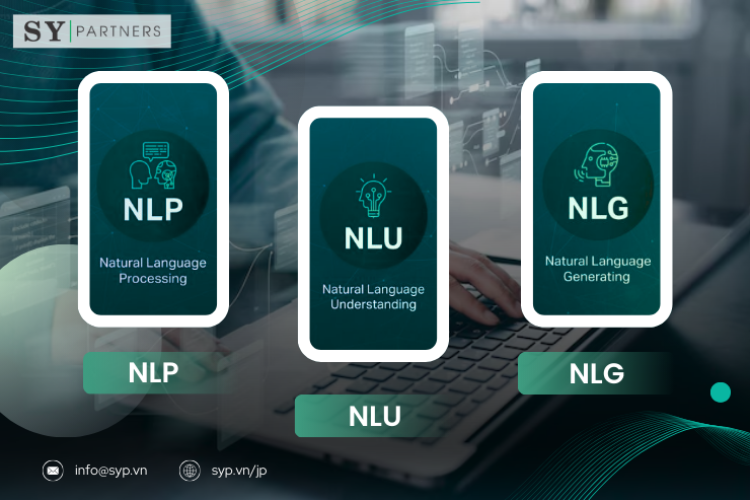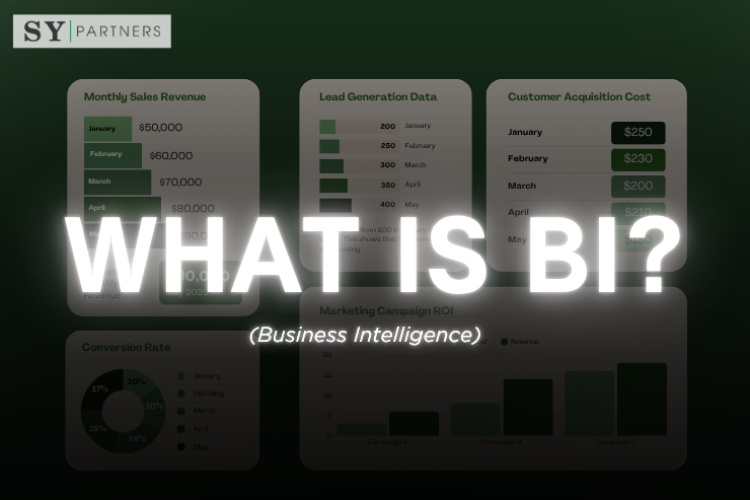What is UX? 7 Key Elements and Practical Steps to Improve User Experience
In the digital age, users no longer seek just functionality in products and services. What truly matters is an intuitive and enjoyable experience—known as User Experience (UX)—which plays a critical role in determining the success of businesses and brands. A well-designed UX not only boosts user satisfaction but also drives measurable business outcomes.
This article explores the definition of UX, its importance, the 7 elements of Peter Morville’s UX model, concrete improvement steps, and real-world success cases. With insights into IT utilization and data-driven personalization, we provide actionable knowledge for both designers and business professionals. If you aim to build deeper connections with your users, this is a must-read.
1. What is UX?
UX (User Experience) refers to the overall experience a user has when interacting with a product or service. It goes beyond appearance and usability to encompass emotional satisfaction, convenience, and efficiency. From the moment a user first encounters a product until they finish using it, every touchpoint contributes to the UX. Companies typically enhance UX through strategies such as:
- Seamless onboarding and intuitive navigation from app installation to operation.
- Robust support and clear guidance when errors occur.
- Personalization through data and AI, e.g., recommending content based on browsing history.
The Scope of “Experience”
UX is not limited to the time a product is in use—it also includes the expectations and impressions formed before and after usage.
For example, consider a café visit:
- Reading reviews on social media,
- The atmosphere upon entering,
- The ease of ordering,
- Comfort while enjoying food and drinks,
- Post-visit impressions and decision to return.
All these touchpoints form part of the user experience.
In essence, UX is about designing the entire user journey, not just making things easy to use. Unlike UI (User Interface), which focuses on appearance and interaction design, UX emphasizes the emotional and behavioral impact of the entire experience.
Next, we’ll clarify the differences between UX and UI by examining them from both a visual and experiential perspective.
2. The Difference Between UI and UX
UI (User Interface) refers to the visual and functional elements that users directly interact with on a screen—such as buttons, colors, and layouts.
UX (User Experience), on the other hand, is a broader concept that encompasses the overall impression, satisfaction, and emotions a user feels when interacting with a product or service.
For example:
- Even if a UI looks visually appealing, if the navigation is confusing, the UX will be poor.
- Conversely, even with a slightly outdated design, if users can easily accomplish their goals, the UX may still be considered excellent.
In short:
- UI focuses on “how it looks and how easy it is to operate.”
- UX focuses on “the quality of the experience and emotional satisfaction.”
The table below summarizes the differences:
| Aspect | UI (User Interface) | UX (User Experience) |
|---|---|---|
| Definition | Visual and interactive elements that users see and manipulate | The overall experience and emotional impression when using a product or service |
| Focus | Visuals, colors, fonts, navigation | Usability, satisfaction, comfort, emotional response |
| Objective | Deliver a clear, consistent, and user-friendly interface | Provide a valuable, enjoyable experience that exceeds user expectations |
| Examples | Button shapes and colors, layout, text readability | Smooth user flows, ease of use, overall journey to goal completion |
| Responsible Roles | UI designers, graphic designers | UX designers, researchers, product managers |
| Evaluation Metrics | Visual consistency, aesthetics, intuitive operability | User satisfaction, retention, churn rate, usability test results |
Thus, UI is a component of UX, and both play a crucial role in shaping user satisfaction. To create an ideal product or service, businesses must balance visual appeal (UI) with a meaningful, seamless experience (UX).
3. Why is UX Important?
UX is not just about usability—it directly impacts business performance. A well-designed UX streamlines user actions, increases conversion rates, and ultimately drives sales growth.
For example, on an e-commerce site:
- If product search and checkout are intuitive, users are less likely to abandon the process and more likely to complete a purchase.
With tools like AI-driven analytics and heatmaps, businesses can pinpoint where users drop off and make targeted improvements. A data-driven UX strategy directly contributes to higher revenue.
On the other hand, poor UX has the opposite effect:
- Confusing navigation, slow loading speeds, or difficulty finding information frustrates users, driving them to competitors.
- Negative experiences often spread through social media and reviews, damaging brand reputation.
In contrast, great UX fosters positive word-of-mouth and builds trust and loyalty.
In today’s digital landscape, UX itself is a key differentiator. With countless alternatives available, providing an intuitive and enjoyable experience is essential to retaining users and strengthening brand loyalty. UX is not only the frontline of customer interaction but also a core driver of competitive advantage.
4. The 7 Elements of UX
Peter Morville’s UX Honeycomb Model outlines seven essential elements that shape user experience. Each of these pillars is critical—if even one is missing, the overall UX quality suffers.
4.1 Useful
Usefulness means that a product or service fulfills user needs and helps them achieve their goals.
- Example: A learning app that helps students overcome weaknesses is considered useful.
- AI-driven personalization and search history analysis can significantly enhance usefulness.
Without usefulness, even the most beautiful design will fail to retain users. Delivering an experience that makes users feel, “I need this” is the foundation of UX success.
4.2 Usable
Usability refers to how easily and intuitively users can operate a product.
- Clear navigation, simple workflows, and straightforward interfaces improve usability.
- AI-powered usability testing helps identify friction points efficiently.
Complex setups or confusing flows drive users away. That’s why designing intuitive UIs with clear pathways is crucial to minimizing frustration.
4.3 Desirable
Desirability adds emotional appeal, fostering attachment to a product or brand.
- Attractive design, smooth animations, and personalized touches elevate UX.
When users love the experience, they are more likely to return and recommend it. Emotional connection transforms functionality into lasting value.
4.4 Findable
Findability ensures that users can quickly access the information or features they need.
- Clear navigation and accurate search functions are central to this.
- AI-based search optimization (e.g., natural language processing) further enhances efficiency.
If information is hard to find, user frustration and drop-off rates increase significantly.
4.5 Accessible
Accessibility means designing inclusively so that everyone—including people with disabilities or the elderly—can use the product.
- Adjusting color contrast and supporting screen readers are standard practices.
- AI-driven technologies like speech recognition and automatic captioning also improve accessibility.
Inclusive design is not just about compliance—it reflects social responsibility and widens the product’s reach.
4.6 Credible
Credibility is about building trust so that users feel safe and confident in using the product.
- Secure communication, accurate information, and a trustworthy brand image are key.
- AI can enhance credibility through fraud detection and data protection.
A credible experience builds long-term loyalty. Without trust, users will abandon even the most functional product.
4.7 Valuable
Value refers to whether the product delivers meaningful outcomes or benefits to users.
- Example: A learning app that helps users improve grades or obtain certifications is inherently valuable.
- AI-powered personalization and performance tracking strengthen perceived value.
Ultimately, the purpose of UX is to deliver value. Supporting user success translates into brand success.
5. Fundamental Steps to Improve UX
A great user experience cannot be achieved without a user-centered perspective. Importantly, UX improvement is not a one-time task but a continuous process.
By following these eight steps and leveraging AI and IT technologies, companies can design experiences that truly deliver value to users.
5.1 Personas and User Research
The first step is to deeply understand your users.
- Define target user personas (e.g., “busy office workers in their 30s” for an e-commerce site).
- Conduct interviews and surveys to uncover needs, frustrations, and behavioral patterns.
With AI-driven analytics, businesses can process web activity logs and purchase histories to create data-backed personas, leading to more effective improvements.
5.2 Customer Journey Mapping
Mapping the entire customer journey makes it possible to visualize challenges across all touchpoints.
- Example: Identifying pain points during the first app launch can help streamline onboarding and reduce churn.
- AI tools such as click analysis and scroll tracking reveal precise user flows and emotional shifts.
A journey map turns subjective assumptions into objective insights.
5.3 Usability Testing and Feedback
Even the best designs reveal hidden issues when tested with real users.
- Observe where users struggle or express dissatisfaction.
- AI can now analyze operation logs, automatically scoring UI problem areas.
- A/B testing allows objective measurement of improvements.
This structured feedback loop accelerates both accuracy and speed of optimization.
5.4 Continuous Improvement (User-Centered Design)
UX must evolve with user needs. Adopting User-Centered Design (UCD) ensures ongoing refinement.
- Add new features or adjust UI elements based on user requests.
- Leverage AI-powered real-time analytics and predictive models to respond quickly to behavioral changes.
Sustained iteration is the key to long-term user retention and satisfaction.
5.5 UI Consistency and Design Systems
Consistency builds trust. Users feel secure when interactions follow predictable rules.
- Inconsistent button placement, colors, or icon meanings create confusion.
- A design system standardizes components (buttons, forms, alerts), ensuring uniformity across teams.
- AI can assist by extracting existing UI patterns to help establish scalable design systems.
Consistency is the backbone of a reliable user experience.
5.6 Mobile-First Optimization
In today’s mobile-first world, UX must be designed with small screens and unique constraints in mind.
- Ensure adequate button size and spacing to prevent errors.
- Optimize for speed and one-handed operation.
- AI-based mobile analytics (e.g., tap heatmaps) highlight underused features or frequent error zones.
Designing for mobile ensures frictionless experiences in the most common user environment.
5.7 Content Quality and Readability
UX is shaped not only by design but also by content quality.
- Poorly written or overly complex explanations can erode trust, no matter how attractive the visuals.
- Present information clearly using headings, bullet points, and icons.
- AI tools can evaluate readability and suggest improvements.
Clarity and conciseness are fundamental to a trustworthy user experience.
5.8 Emotional UX (Emotional Design)
Beyond functionality, emotional impact is essential. Users are drawn not only to efficiency but also to experiences that evoke delight and empathy.
- Examples: playful micro-interactions, positive feedback messages, or animations after task completion.
- AI-driven sentiment analysis can identify which elements foster joy or frustration, enabling targeted improvements.
Emotional UX transforms a service from being merely useful to being memorable and loved.
Together, these eight steps provide a structured roadmap for building user experiences that are intuitive, consistent, and emotionally engaging, while harnessing the full potential of AI to accelerate improvement.
Summary
User Experience (UX) is the key to enhancing user satisfaction and maximizing business outcomes. By understanding Peter Morville’s seven elements (usefulness, usability, desirability, findability, accessibility, credibility, and value), and applying methods such as personas, journey mapping, usability testing, and continuous improvement, businesses can optimize UX effectively.
Leveraging IT and AI enables data-driven UX design that delivers experiences resonating with users. Start by listening to user feedback and making small, incremental improvements to create meaningful impact.


 EN
EN JP
JP KR
KR




